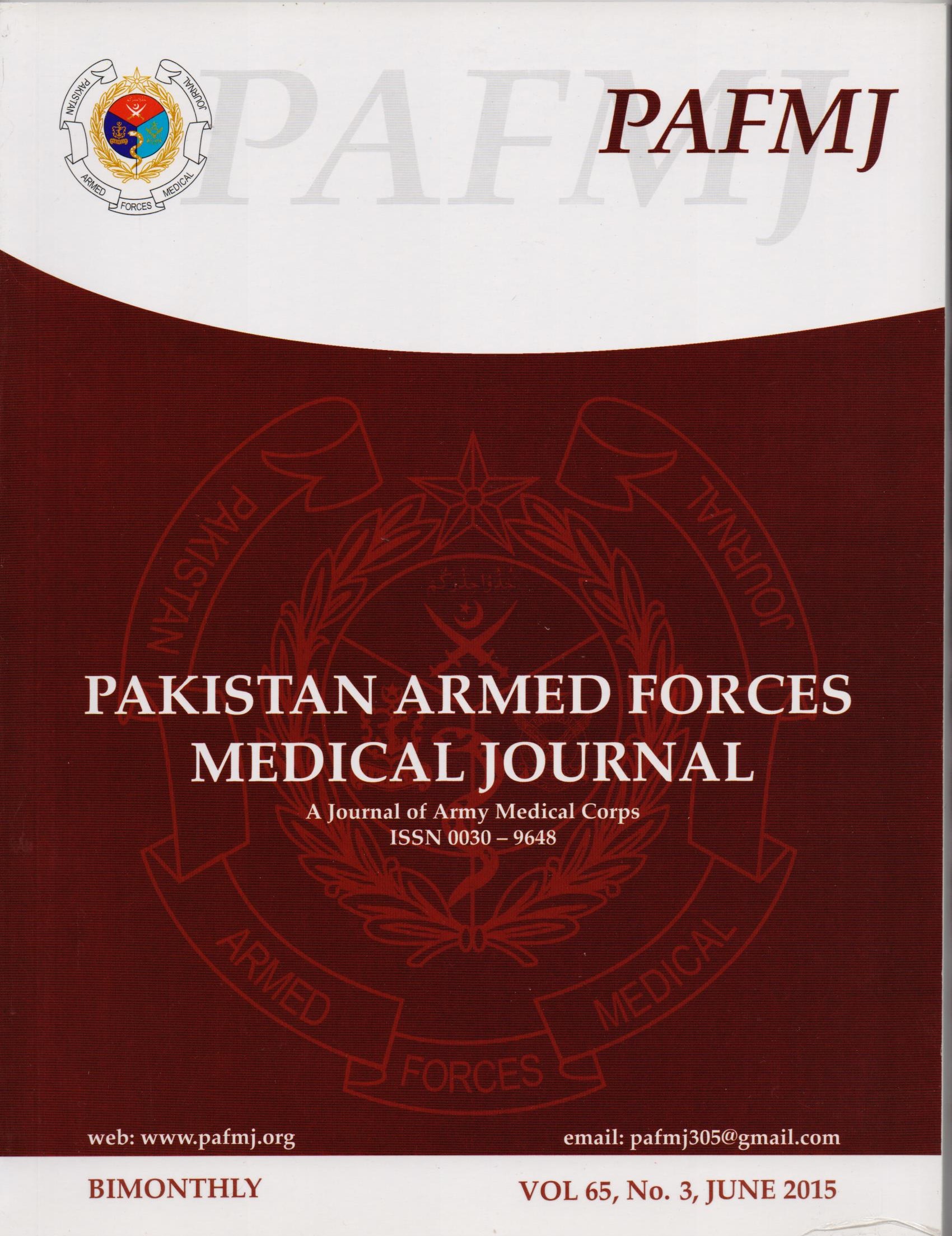RISING FREQUENCY OF PLACENTA PREVIA AND ASSOCIATED MORBIDITY IN WOMEN WITH PREVIOUS CAESAREAN SECTION
Placenta Previa and Previous Caesarean Section
Keywords:
Caesarean section, Morbidity, Placenta previaAbstract
Objective: To determine rising frequency of placenta previa and its associated morbidity in women with previous caesarean section.
Study Design: Cross sectional study.
Place and Duration of Study: This study was conducted in the Department of Obstetrics & Gynecology at CMH Kohat from Jul 2010 to Jun 2011.
Patients and Methods: This study included all pregnant women undergoing repeat caesarean sections. Of these, total 74 patients were admitted with placenta previa. The frequency and associated morbidity were determined.
Results: In our study 74 patients with placenta previa were included. 71.62% were less than 35 yrs of age, while 28.38% were equal to or more than 35 years. The gestational age at presentation was 24–36 weeks in 74.3% and 37 + weeks in 5.7% at presentation, 89% patients were symptomatic and 11% were asympyomatic. The morbidities observed were placenta accrete 47%, urinary tract trauma in 63.51%, caesarean hysterectomy in 62.16%, post operative febrile morbidity in 77.03%, maternal mortality was nil, paralytic ileus in 28.38%, PPH in 82.43%, surgical site infection in 16.21%.
Conclusion: Frequency of placenta previa and its associted morbidity was raised due to repeated caesarean section rate which must be reduced to decrease maternal morbidiy and mortality.











